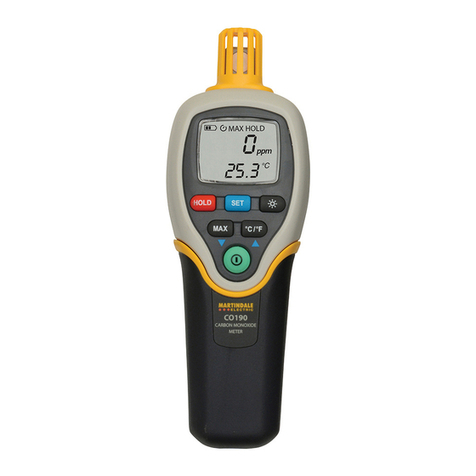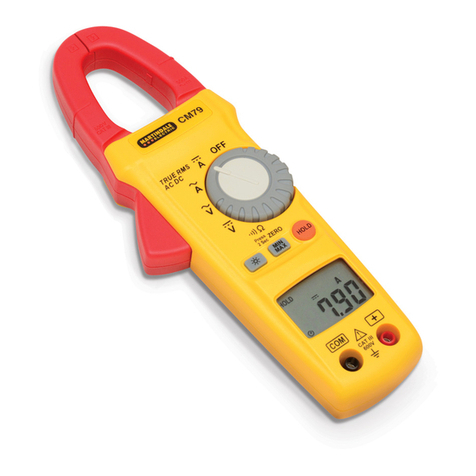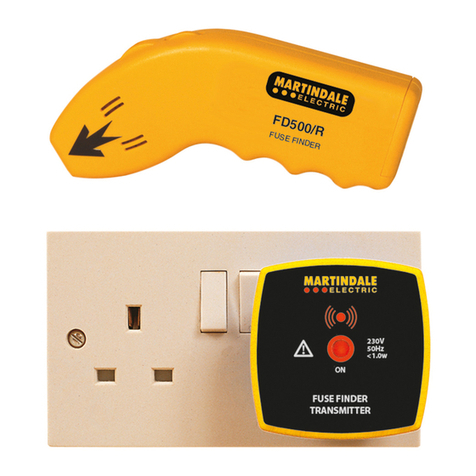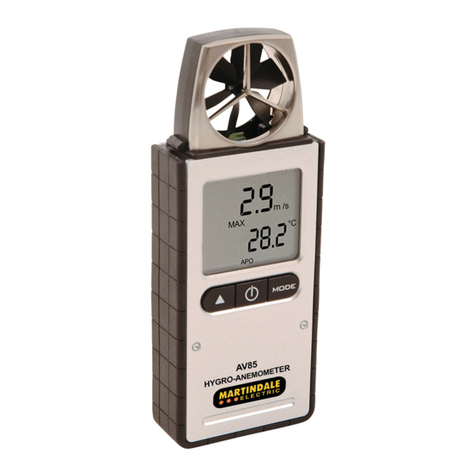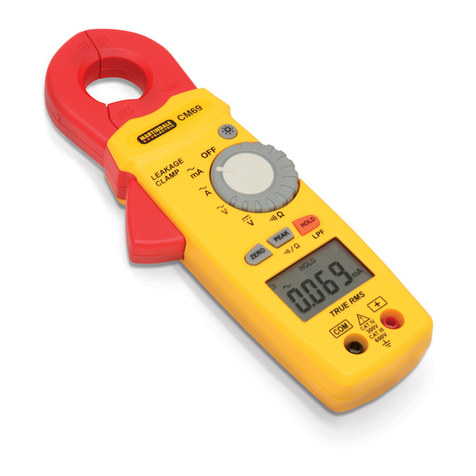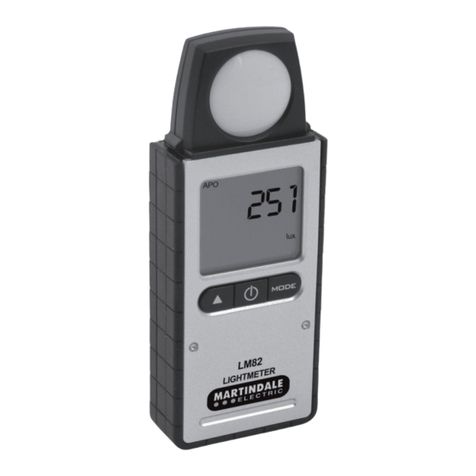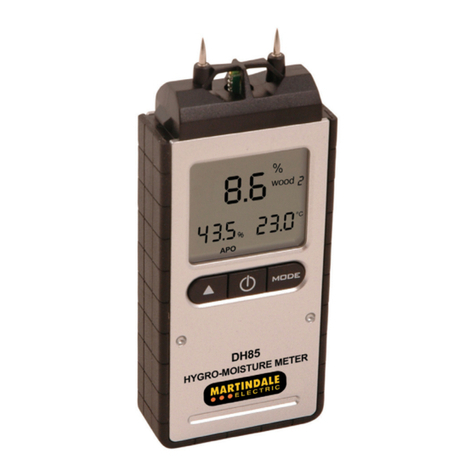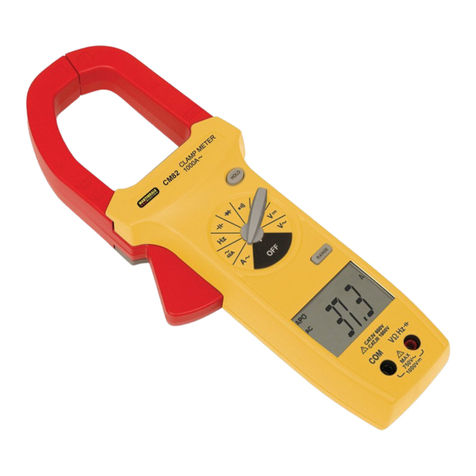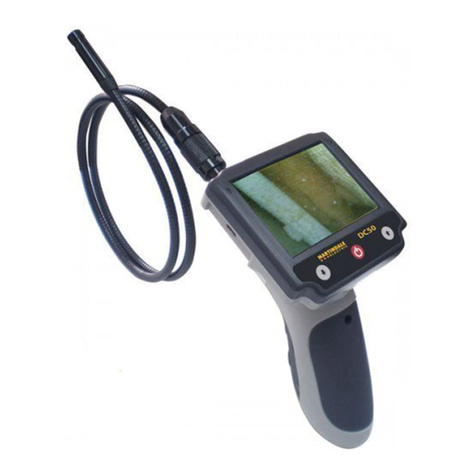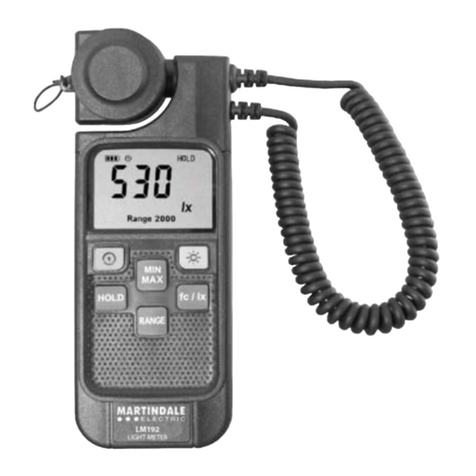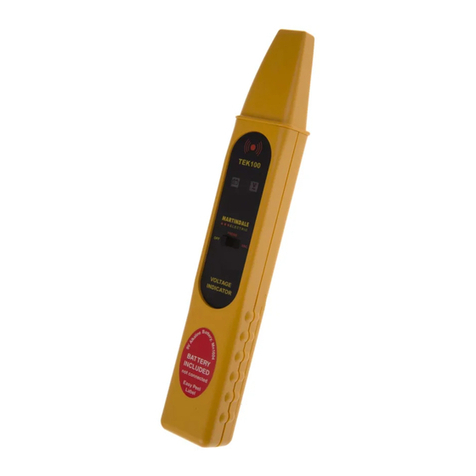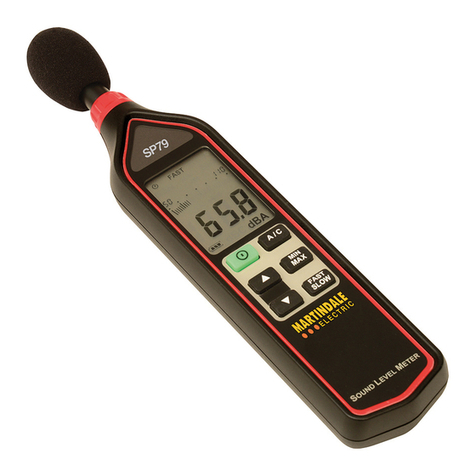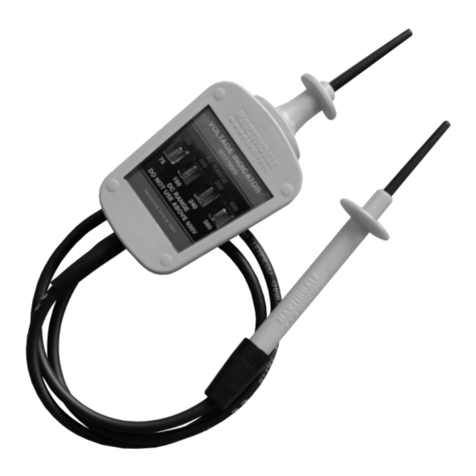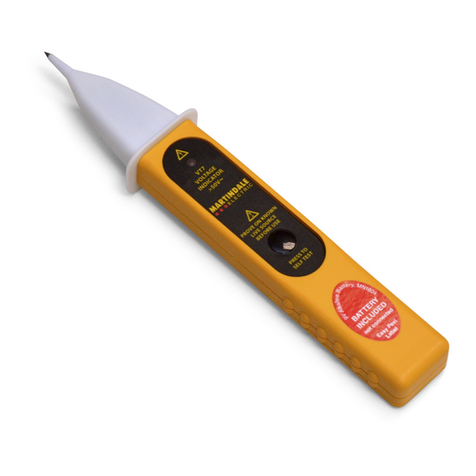3
1. Volt - Input Terminal
This is the positive input terminal for VOLTAGE measurements. Connection is
made to it using the red test lead.
2. COM - Common Terminal
This is the negative (Ground) input terminal for all measurement modes except
current. Connection is made to it using the black test lead.
3. HzFΩFrequency, Capacitance, Ohms, Diode Input Terminal
This is the positive input terminal for capacitance, frequency, Ohms and diode
measurements. Connection is made to it using the red test lead.
4. Display
The display indicates the measured value of signal, function mode, low battery,
range, peak and hold settings.
5. Function / Range selector rotary switch
The rotary switch selects the function and the desired range.
6. RANGE Button
Selects the manual ranging mode.
7. ZERO ΔButton
Selects the relative mode.
8. PEAK Button
This function is used to measure the peak value of an AC current signal and is
used with the AC current measurement function only.
9. MIN / MAX Button
This function is used on all ranges except AC current, to measure the maximum
and minimum values.
10. Hold Button
Freezes the displayed reading.
11. Clamp Jaws
Detects AC or DC current flowing through the conductor. The "+" marking on the
jaw indicates direction of DC current flowing through the conductor being tested.
When the current flows from the upside (display) to the underside of the
instrument, the polarity of the reading is positive and vice versa.
4
12. Trigger
Squeeze the trigger to open the clamp jaws. When the trigger is released, the
jaws will close.
1.2 UNPACKING AND INSPECTION
After removing your new Digital Clamp Meter (DCM) from its packaging, you
should have the following items:
1. Digital clampmeter
2. Test lead set (one black, one red)
3. 9-Volt battery (installed in meter)
4. Instruction manual
5. Protective carry case
If any of the above items are missing or are received damaged, please contact
the distributor from whom you purchased the unit.
1.3 REPLACING THE BATTERY
This meter is powered by a NEDA type 1604 or equivalent 9-volt battery. When
the meter shows the " " sign the battery must be replaced to maintain proper
operation. Follow the procedure below to replace the battery.
1. Disconnect the test leads from any live source, turn the rotary switch to off
and remove the test leads from the input terminals.
2. The battery cover is secured to the bottom case by a screw. Using a Phillips
head screwdriver, remove the screw and then remove the battery cover.
3. Replace the battery with a new equivalent 9-volt one observing correct polarity.
4. Replace the battery cover and re-install the screw.
WARNING
To avoid electrical shock, disconnect the test leads and any input signals
before replacing the battery. Replace only with same type of battery.
5
2 SAFETY INFORMATION
The instrument complies with class II overvoltage CAT III 1000V of the IEC1010-
1 (EN61010-1) ; UL3111-1; and CAN/CSA C22.2 #1010.1-92 standards, pollution
degree 2 in accordance with IEC-664 indoor use. If the equipment is used in a
manner not specified, the protection provided by the equipment may be impaired.
This product complies with the requirements of the following European
Community Directives: 89/336/EEC (Electromagnetic Compatibility) and
73/23/EEC (Low Voltage) as amended by 93/68/EEC (CE Marking).
Electrical noise or intense electromagnetic fields in the vicinity of the equipment
may disturb the measurement circuit. Measuring instruments will also respond to
unwanted signals that may be present within the measurement circuit. Users
should exercise care and take appropriate precautions to avoid misleading results
when taking measurements in the presence of electromagnetic interference.
3 OPERATION
Before making any measurements read the safety precautions. Always examine
the instrument and accessories used with the instrument for damage,
contamination (excessive dirt, grease etc) and defects. Examine the test leads for
cracked or frayed insulation and make sure the lead plugs fit snugly into the
instrument terminals. If any abnormal conditions exist, do not attempt to take any
measurements.
3.1 SAFETY PRECAUTIONS
The following safety precautions must be observed to ensure maximum personal
safety during the operation, service and repair of this meter:
1. Read these operating instructions thoroughly and completely before operating
your meter. Pay particular attention to WARNINGS which will inform you of
potentially dangerous procedures. The instructions in these warnings must
always be followed.
2. Please refer to the inside of the front cover for the WARNING instructions.
6
3.2 VOLTAGE MEASUREMENTS
1. Select desired voltage range (AC V~ or DC V ).
2. Connect the Black test lead into the COM input jack on the CM58 and the Red
test lead into the VOLT input jack.
3. When Connecting to a circuit always connect the common (Black) lead to the
circuit to be tested first and then the Live (Red) lead.
4. When testing DC voltage connect the common (Black) lead to negative and
then the Live (Red) lead to positive.
3.3 CURRENT MEASUREMENTS
WARNING
To avoid possible electric shock, instrument damage and / or
equipment damage, do not attempt to take any voltage measurements
if the voltage is above 1000V DC or 750V AC. These are the maximum
voltages that this instrument is designed to measure. The "COM"
terminal potential should not exceed 500V measured to ground.
WARNING
The clamp jaws are designed to take current measurements on
circuits with a maximum voltage difference of 500V AC between any
conductor and ground potential. Using the clamp jaws for current
measurements on circuits above this voltage may cause electric
shock, instrument damage and / or damage to the equipment under
test. Before measuring current, make sure that the test leads are
removed from the instrument.
The clamp jaws are overload protected up to 500V AC for up to 1
minute. Do not take current readings on circuits where the maximum
current potential is not known. Do not exceed the maximum current
that the instrument is designed to measure.
